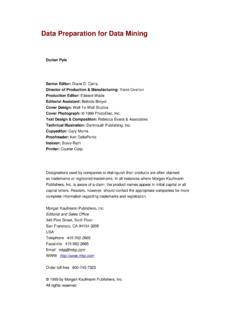Transcription of UNION MEMBERS — 2017 - Bureau of Labor Statistics
1 For release 10:00 (EST) Friday, January 19, 2018 USDL-18-0080 Technical information: (202) 691-6378 Media contact: (202) 691-5902 UNION MEMBERS 2017 The UNION membership rate the percent of wage and salary workers who were MEMBERS of unions was unchanged at percent in 2017, the Bureau of Labor Statistics reported today. The number of wage and salary workers belonging to unions, at million in 2017, edged up by 262,000 from 2016. In 1983, the first year for which comparable UNION data are available, the UNION membership rate was percent and there were million UNION workers. The data on UNION membership are collected as part of the Current Population Survey (CPS), a monthly sample survey of about 60,000 eligible households that obtains information on employment and unemployment among the nation's civilian noninstitutional population age 16 and over.
2 For more information, see the Technical Note in this news release. Highlights from the 2017 data: The UNION membership rate of public-sector workers ( percent) continued to be more than five times higher than that of private-sector workers ( percent). (See table 3.) Workers in protective service occupations and in education, training, and library occupations had the highest unionization rates ( percent and percent, respectively). (See table 3.) Men continued to have a higher UNION membership rate ( percent) than women ( percent). (See table 1.) Black workers remained more likely to be UNION MEMBERS than White, Asian, or Hispanic workers. (See table 1.) Nonunion workers had median weekly earnings that were 80 percent of earnings for workers who were UNION MEMBERS ($829 versus $1,041).
3 (The comparisons of earnings in this release are on a broad level and do not control for many factors that can be important in explaining earnings differences.) (See table 2.) Among states, New York continued to have the highest UNION membership rate ( percent), while South Carolina continued to have the lowest ( percent). (See table 5.) - 2 - Industry and Occupation of UNION MEMBERS In 2017, million employees in the public sector belonged to a UNION , compared with million workers in the private sector. Although the UNION membership rate for private-sector workers edged up by percentage point in 2017, their unionization rate continued to be substantially lower than that for public-sector workers ( percent versus percent). Within the public sector, the UNION membership rate was highest in local government ( percent), which employs many workers in heavily unionized occupations, such as teachers, police officers, and firefighters.
4 Private-sector industries with high unionization rates included utilities ( percent), transportation and warehousing ( percent), telecommunications ( percent), and construction ( percent). Low unionization rates occurred in finance ( percent), food services and drinking places ( percent), and professional and technical services ( percent). (See table 3.) Among occupational groups, the highest unionization rates in 2017 were in protective service occupations ( percent) and in education, training, and library occupations ( percent). The rate for workers in education, training, and library occupations continued to decline in 2017. Unionization rates were lowest in sales and related occupations ( percent); farming, fishing, and forestry occupations ( percent); food preparation and serving related occupations ( percent); and in computer and mathematical occupations ( percent).
5 Selected Characteristics of UNION MEMBERS In 2017, the UNION membership rate continued to be higher for men ( percent) than for women ( percent); over the year, the rate for men edged up, and the rate for women edged down. (See table 1.) However, the gap between their rates has narrowed considerably since 1983 (the earliest year for which comparable data are available), when rates for men and women were percent and percent, respectively. Among major race and ethnicity groups, Black workers continued to have a higher UNION membership rate in 2017 ( percent) than workers who were White ( percent), Asian ( percent), or Hispanic ( percent). By age, UNION membership rates continued to be highest among workers ages 45 to 64. In 2017, percent of workers ages 45 to 54 and percent of those ages 55 to 64 were UNION MEMBERS .
6 In 2017, the UNION membership rate for full-time workers was about twice the rate for part-time workers ( percent versus percent). UNION Representation In 2017, million wage and salary workers were represented by a UNION . This group includes both UNION MEMBERS ( million) and workers who report no UNION affiliation but whose jobs are covered by a UNION contract ( million). (See table 1.) Earnings Among full-time wage and salary workers, UNION MEMBERS had median usual weekly earnings of $1,041 in 2017, while those who were not UNION MEMBERS had median weekly earnings of $829. In addition to coverage by a collective bargaining agreement, this earnings difference reflects a variety of - 3 - influences, including variations in the distributions of UNION MEMBERS and nonunion employees by occupation, industry, age, firm size, or geographic region.
7 (See tables 2 and 4.) UNION Membership by State In 2017, 27 states and the District of Columbia had UNION membership rates below that of the average, percent, while 22 states had rates above it and 1 state had the same rate. All states in both the East South Central and West South Central divisions had UNION membership rates below the national average, while all states in the New England, Middle Atlantic, and Pacific divisions had rates above it. UNION membership rates increased over the year in 25 states and the District, decreased in 21 states, and were unchanged in 4 states. (See table 5 and the map.) Nine states had UNION membership rates below percent in 2017, with South Carolina having the lowest rate ( percent). The next lowest rates were in North Carolina ( percent) and Utah ( percent).
8 Two states had UNION membership rates over percent in 2017: New York ( percent) and Hawaii ( percent). The largest numbers of UNION MEMBERS lived in California ( million) and New York ( million). Over half of the million UNION MEMBERS in the lived in just seven states (California, million; New York, million; Illinois, million; Michigan and Pennsylvania, million each; and New Jersey and Ohio, million each), though these states accounted for only about one-third of wage and salary employment nationally. Technical Note The estimates in this release are obtained from the Current Population Survey (CPS), which provides basic information on the Labor force, employment, and unemployment. The survey is conducted monthly for the Bureau of Labor Statistics by the Census Bureau from a scientifically selected national sample of about 60,000 eligible households.
9 The UNION membership and earnings data are tabulated from one-quarter of the CPS monthly sample and are limited to wage and salary workers. All self-employed workers are excluded. Beginning in January of each year, data reflect revised population controls used in the CPS. Additional information about population controls is available on the BLS website at #pop. Information in this release will be made available to sensory impaired individuals upon request. Voice phone: (202) 691-5200; Federal Relay Service: (800) 877-8339. Reliability of the estimates Statistics based on the CPS are subject to both sampling and nonsampling error. When a sample, rather than the entire population, is surveyed, there is a chance that the sample estimates may differ from the true population values they represent.
10 The exact difference, or sampling error, varies depending on the particular sample selected, and this variability is measured by the standard error of the estimate. There is about a 90-percent chance, or level of confidence, that an estimate based on a sample will differ by no more than standard errors from the true population value because of sampling error. BLS analyses are generally conducted at the 90-percent level of confidence. The state section of this release preserves the long-time practice of highlighting the direction of the movements in state UNION membership rates and levels regardless of their statistical significance. The CPS data also are affected by nonsampling error. Nonsampling error can occur for many reasons, including the failure to sample a segment of the population, inability to obtain information for all respondents in the sample, inability or unwillingness of respondents to provide correct information, and errors made in the collection or processing of the data.















